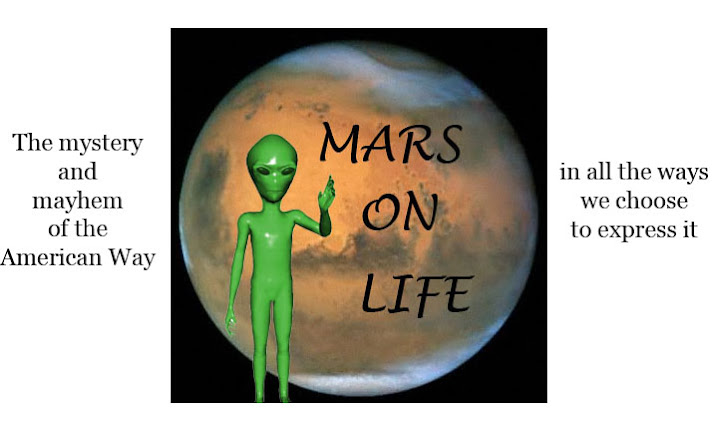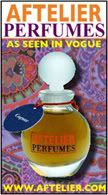Huddle 'round the hearth, children, and let me tell you a Christmas story. This Christmas story is unlike any other: It has no reindeer, no toys, no sleighs, no Santas, no holiday hams to drop on the floor and wash off in the sink.
This Christmas story is different, for it is a fashion Christmas story. Those of us of a certain age remember when there was no fashion. I see your look of incredulity; certainly there was fashion in the Ice Age, what about brontosaurus skins and Dior's New Look?
Ah, yes, I say with tired sigh, but those were fashions for magazines. For magazines and Paris and Concorde and Jerry Hall. They were not fashions for Duluth, Minnetonka, and Aurora Borealis. If you lived in Duluth, Minnetonka, or Aurora Borealis you got your "fashion" in the Sears catalogue.
I imagine that some of you reading this might not have grown up in America--I do not subscribe to insularity-- or that some of you reading this might have been born too late to enjoy an annual holiday tradition: the Sears Wish Book.
The book, a giant volume that weighed eight pounds, was dropped off not by Santa but by the regular old postman. This happened somewhere at the end of September, to give everyone in the family time to worry its 800+ pages. This is when Sears trotted out the really desirable items they'd been withholding from the more prosaic seasonal catalogues. It was important to make your selection fast and early, because Sears sold out.
All across the Midwest, up and down the Northeast Corridor, on sheep ranches in Montana and other barren pockets of the country, the Wish Book brought a small ray of sartorial hope to a blighted landscape. Here was the chance to wear an interpretation of the latest trends, three years after they had filtered down off the runways. And had been through 1,780 modifications to make them appeal to the lowest common denominator, thereby resulting in the highest gross profit.
Sometime around 1975, someone in Paris or Italy (and I blame the latter) must have done something with velvet. Whatever this might have been is lost to memory. Some designer made a black velvet jacket, and now, four years later, the Wishbook caught up to the trend. This was the disco era, after all, and velvet ran number two to spandex as the year's hottest look. At the roller rink, that is, since the disco craze was largely centered around urban areas and left those of us who lived in the tundra bopping to the Bee Gees on rented rollerskates.
Sears wasn't responsible for velour. Velour had been kicking around for a couple of years prior and was the thing inexplicable; these were the days before track suits, so the preponderance of velour in the year 1979 is another mystery. Was it a metaphor or did it just spring up organically out of some basic human need? If the former is true, what did it reflect? The advent of the Anti-Christ? Satan's headless polyester horseman? And yet, there it was, not just in the Wish Book but everywhere else you looked--if your looking was limited to J. C. Penney, Lerner's , and for those of you on the East Coast, Cummings.
This is how America shopped, children, almost 30 years ago tomorrow. In 1979, the average median household income was $16,461.00. The Time Man of the Year was the Ayatollah Khomeini. Three Mile Island dumped its toxic swill all over Central Pennsylvania. The Soviets invaded Afghanistan, stirring the shit in a pot that to this day has never refused to boil.
The Wish Book was never gung-ho political and had no agenda other than celebrating the American Way of Life. The American Way of Life was something that had been aggrandized by Norman Rockwell, although in Rockwell's case with a sly understanding of the comedic human foible. In Sears' hands, the American Way of Life was humorless, or at least not ironic. Sure, there was Mom smiling as she pulled the cookies from the oven, and there was Linda holding hands with Michelle as they modeled overalls, but this was a happy and sterile tableau.
The Book's value was two-fold. It represented America as America wanted to be seen, through the eyes of a Midwestern retail giant that had been a leader in bringing modernity to the hinterland home at the close of the nineteenth century. The Book also provided an allegiant signpost right up there with "...and our flag was still there." On the 4th of November, the Iranians had seized the U. S. Embassy in Teheran and had taken hostages. Tie a yellow ribbon. Any fear in the heartland could be (inadequately) offset by the steady comfort of the Book's homey pages. What could be more reassuring than promoting American values by offering a full page of cowboy outfits for boys? This was, after all, a generation that had grown up on Davy Crockett and Bonanza, when the only battles fought were those with the pesky Indians whom we latterly reduced to buffoons.
fashion with a lower-case "f" headlines the page of the Book's most prized  items, a quartet of mix-and-match items worn by models with candy-apple lipstick. These items were part of "the Designer group," which implied that Sears either had a designer on hand anonymously or that these styles were reflective of something more urgent going on elsewhere.
items, a quartet of mix-and-match items worn by models with candy-apple lipstick. These items were part of "the Designer group," which implied that Sears either had a designer on hand anonymously or that these styles were reflective of something more urgent going on elsewhere.
Which, of course, they were not. They were simply slightly more au fait than what had appeared in the prior year's catalogue, but as historical markers they are brilliant. This was exactly how one aspired to dress in 1979, if one were without any other option (more than half of the country). Consider the beauty of the red/black ensemble in the bitter Christmas landscape of Rochester, Minnes ota. Consider the smallest notion that this was indeed "the latest thing" and was, in fact, "fashion," when everyone else was still pulling on 1968's stretch pants, stuffing them into go-go boots and pronouncing it swell. We may have wanted to look like the Cosmo cover, but deep down inside we knew differently. It's an awfully long way from here to there, assuming you had hubris enough to ignore the competition.
ota. Consider the smallest notion that this was indeed "the latest thing" and was, in fact, "fashion," when everyone else was still pulling on 1968's stretch pants, stuffing them into go-go boots and pronouncing it swell. We may have wanted to look like the Cosmo cover, but deep down inside we knew differently. It's an awfully long way from here to there, assuming you had hubris enough to ignore the competition.
The Wish Book was us. Big capital U. capital S. us. It was a silent annual treatise on homeland, backyard America, as valuable a historical reference as any magazine or newspaper. The book was a retail quotation of the real America, the egocentric Andy Hardy America with ice cream shops and Main Streets, the America that never cast a jealous eye anywhere else because we had it all right here, right now, so let's dig in and enjoy the harvest.
MERRY CHRISTMAS!
Image source: Flickr
Monday, December 24, 2007
A Christmas Story
Subscribe to:
Post Comments (Atom)









5 comments:
I adore your blog and would love to trade links! trendinista.blogspot.com
Merry Christmas to you too!!!
So excited for it.....
Sorry, Jill, no cigar for Christmas. Not even a ladylike Tiparillo.
A note to readers: Bit of bad blood with commenter Jill, above.
My feeling is that Jill did not remember who I was, and most certainly does not "adore" my blog. This was just link-begging at its most obvious and similar messages have appeared elsewhere.
I actually read and admire the blogs I link to. I do not add or expect to be added at a whim.
what a beautifully written post, suzanna. even though i grew up in LA, i also vividly remember the sears catalogue from my youth. (suburbs are suburbs, wherever you may be, i suppose.) i don't remember the massive catalogue being specifically a christmas-oriented thing (perhaps because i'm not christian?) but i do remember that its arrival caused me much excitement for the endless afternoons i could spend flipping its pages. it seemed so big to me, as a little kid (and, being younger than you, it only existed for me during my early childhood) that i felt as though for weeks i could open it randomly and find a completely new section that i hadn't seen before. oh, childhood...
Post a Comment